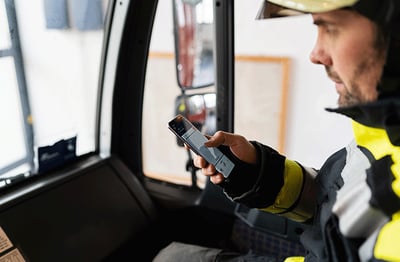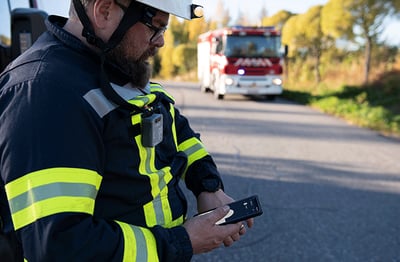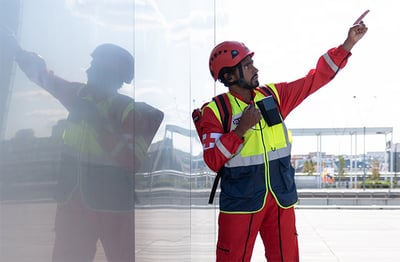Public safety organizations and businesses already use smart devices for non-critical purposes. Now however, thanks to 5G technology, these organizations can have mission-critical broadband that ensures the use of smart devices in all of their critical operations. So how should organizations go about this adoption?
In the past two years, I’ve been talking with experts to discover the biggest pain points endured by public safety organizations. Following this research, I’m now going to share the first things you need to know when your organization wants to adopt mission-critical smartphones and apps.
- How to bring smart and hybrid devices into professional use
- Managing your devices and apps professionally
- How to use TETRA and smartphones in a hybrid way
- Battery life in your duty smartphone: what you need to know
- How RFID, NFC and IoT are related to professional smart devices and apps
- Why professional smartphones need secure, special gadgets
- Location tracking and professional smart devices: the biggest mistakes to avoid
One thing is certain: most people will resist sudden change. Your smartest way forward when adopting mission critical smartphones and apps is to aim for a seamless transition, with minimal disruption. Take a look at the following tips and advice, and you’ll avoid many pains in the process.
1. How to bring smart and hybrid devices into professional use
You should first plan how to configure and manage your smart devices and apps – the smart way. Prior to adoption, you should develop a plan that sets clear objectives and provides a vision of how the devices and apps will be used. A good plan makes for a smooth and professional process.
Start with the “why”. By asking questions with “why”, the responses will provide a full picture of your situation.

It’s likely that you’ll need an Enterprise Mobility Management (EMM) solution, so think about its working environment. Do your devices function in an isolated environment or do they run on the public internet? The answer will set out the needs for the EMM.
Here you will find 14 tips for device management success.
Note all these tips and remember the last one: do not stop developing and improving. You need to keep on top of market changes. There will be new devices, accessories, and apps to adopt, so make sure you can provide the necessary support and maintenance. Continuous improvement is important to keep you and your organization up-to-date.
To get a full picture of what lies between tips 1 and 14, read all the 14 tips on how to succeed in smart device management.
2. How to manage your devices and apps professionally
One of the 14 tips for device management success needs a closer look. You’ll probably need an EMM solution for configuring and managing the devices and apps. But how should it work for the four vital tasks of integration, security, management, and optimization?
Read the ins and outs of managing smart and hybrid devices and apps – using an EMM solution.
3. How to use TETRA and smartphones in a hybrid way
Mission-critical broadband will deliver important new capabilities to professional organizations because it can easily handle massive amounts of data. But today’s TETRA radio communication systems deliver five important strengths that users would hate to lose:
- network availability
- priorities
- security features
- excellent coverage
- strong device-to-device communication (Direct Mode DMO).
A hybrid phase happens when an organization brings mission-critical broadband into use while still using the narrowband TETRA network in parallel. In the hybrid set-up, the essentials of TETRA are available and open many new possibilities.
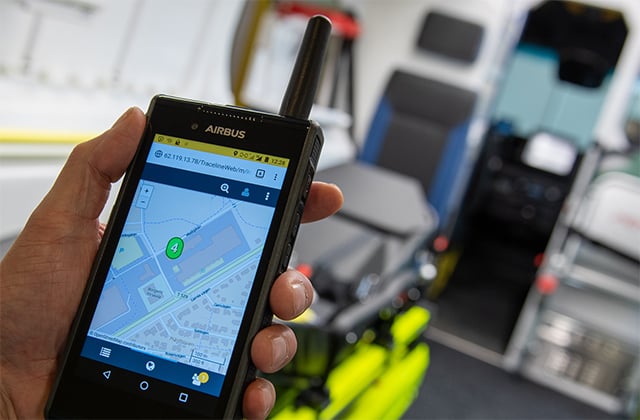
For example, a hybrid device that is able to run on both TETRA and broadband can choose the best available network. The Tactilon Dabat hybrid device equipped with the Tactilon Agnet solution can indeed roam between TETRA and broadband.
The hybrid set-up also lets you introduce new services and features, such as:
- professional apps
- cameras – store and share photos and videos
- visual information – share multimedia with colleagues or dispatchers
- videos from drones or CCTV cameras
- social media feed analysis.
These further examples of using TETRA and smartphones in a hybrid way will highlight how you can use mission-critical broadband, as well as narrowband devices and apps, to enhance your operations.
4. Battery life in your duty smartphone: what you need to know
Because your professional communication device is your lifeline in critical situations, it has to be secure, charged and ready to go at all times. So, what are the most important battery requirements for smart and hybrid devices in mission-critical tasks?
When things get hectic and there’s no time to charge the device, a spare battery will keep you going. Professional organizations should consider adopting smart devices that have a removable battery. Most off-the-shelf smartphones don’t have one, but some smartphones designed for professional use do have this important feature, as does the Tactilon Dabat hybrid device.
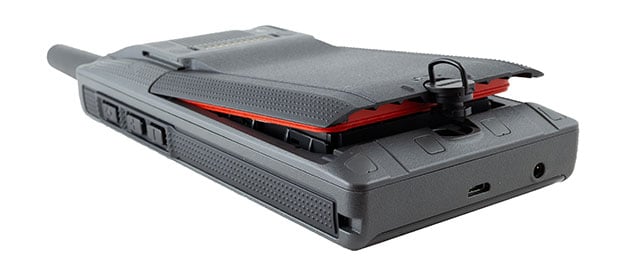
And if you’re considering the use of a portable power bank, make sure it’s safe to use with your device.
Here’s a good summary of things to look for in your professional smartphone regarding battery life.
Handpicked related content
Your way of using a smartphone affects its power consumption. For example, always-on location tracking, active apps, and display lights are among the functions that will use up power. For those keen on learning how to make their device run for longer between recharges, take a look at eight great ways to extend the battery life for your duty smartphone.
And think: how many devices with different batteries and chargers are you carrying? What if you only had one device to charge? Could you replace three devices – your radio, smartphone, and camera – with a single hybrid device such as Tactilon Dabat? This blog post explores the idea: "What is the right number of devices to carry?"
5. How RFID, NFC and IoT are related to professional smart devices and apps
Let’s say your organization has decided to adopt broadband and apps for professional use. How are RFID, NFC and IoT related to that?
These three abbreviations and terms have one thing in common: they are all related to the exchange of information between computers, devices or things – without human interaction. As a point of note, the same technologies form the basis of RFID and NFC, while IoT is based on other core technologies.
RFID – Radio Frequency Identification – is a wireless (contactless) communication technology between a tag and a reader. RFID is most often used with passive tags across a range of a few meters.
NFC – Near-Field Communication – is an RFID protocol. It is most often used for bidirectional information exchange over a range of a few centimeters, like in contactless payment at a cashier desk.
IoT sensors – Internet of Things sensors – can be either active or passive and usually have a range of up to a few kilometers.
Get a better understanding of how RFID, NFC and IoT are related to the adoption of smart devices and apps by reading 15 things your boss expects you to know about RFID, NFC and IoT.
6. Why professional smartphones need secure accessories and gadgets
When your organization is evolving from PMR to broadband, you should also make plans for accessories and gadgets. But why are they so important?
For public safety and mission-critical users, the communication device is a tool that needs to work properly and fulfill its purpose. The device, together with its appropriate accessories and gadgets for specific operations, must form a full working package.

As the interfaces that applications offer are different, it’s important that the mission-critical application provider has tested the accessory, smart device, and app together. This is the only way to know they will work during operational use.
For any user, it’s important to select accessories for different purposes – there is no such thing as a “one-size-fits-all” accessory. And here is a great summary of the reasons why professional smartphones need secure, special gadgets.
Handpicked related content
To see the accessories that are available for the Tactilon Dabat hybrid device, browse Tactilon Dabat accessories in the online catalogue.
By considering a solution such as Tactilon Agnet, your team can get more benefits from a hybrid device and its professional apps, and find new ways of working. Accessories and devices related to Tactilon Agnet can be found from this catalogue.
7. Location tracking and professional smart devices: the biggest mistakes to avoid
Introducing the location tracking of people and objects is a tremendous opportunity for many organizations. The benefits can be significant – if you are smart about avoiding seven common mistakes:
- Not considering battery consumption
- Relying on one “sense” only
- Not thinking about indoor positioning
- Only using location data during an incident
- Failing to define key use cases first
- Not considering personal data
- Thinking technology is the only thing that matters.
This is a lot to contemplate – from power consumption and satellite navigation systems, through to your specific use cases and privacy matters. Take a closer look at how to avoid the 7 biggest location tracking mistakes and you’ll be closer to getting things right.
To summarize –
These are the first things to consider when your organization wants to bring mission-critical smartphones, hybrid devices, and apps into professional use. By taking note of these topics you can smooth your journey from traditional radio communication to complementary and mission-critical broadband.

